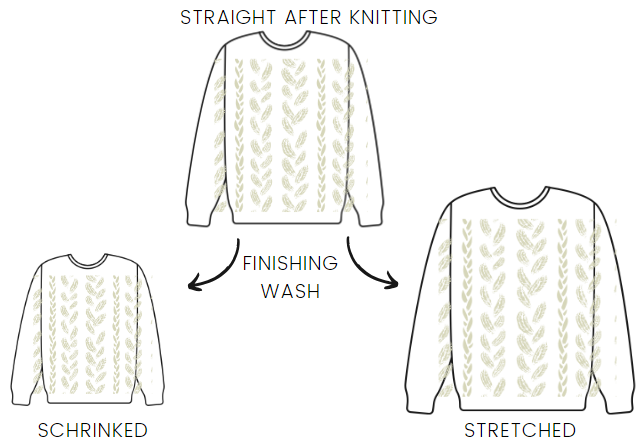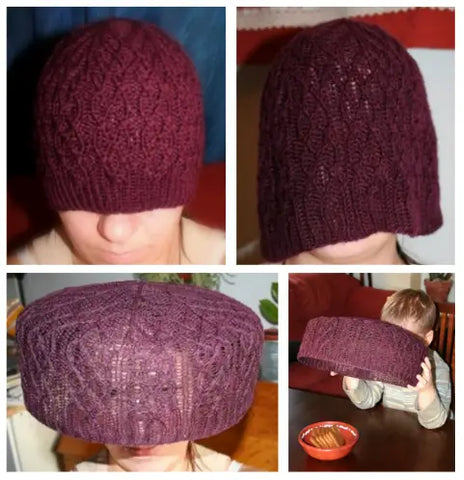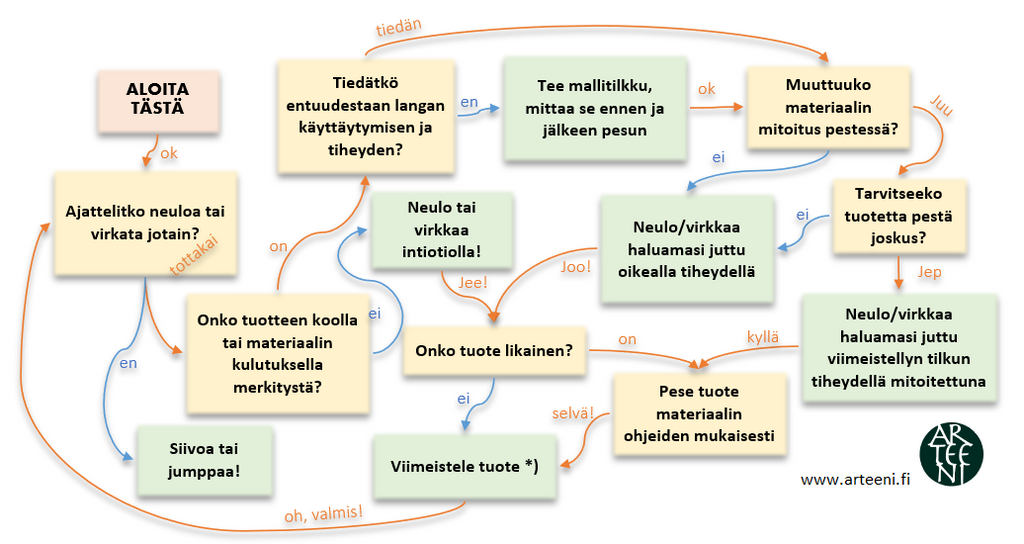
There are many ways to finish knitted and crocheted projects: leaving them unfinished, light steaming, ironing through fabric, laying flat and dampening, washing, soaking, and blocking. Each project and material requires its own approach.
Even a professional might advise against washing a new knit since knits are rarely washed, and it could unnecessarily damage the finished product. But let’s reconsider.
Gauge Swatch and Its Finishing – Key to Success
The first and possibly most important step is the gauge swatch. It helps ensure correct stitch tension, and the swatch should always be finished to see how the yarn behaves after washing. This is especially critical for garments or items where dimensions matter and that might need washing later. Without this knowledge, the finished piece could shrink, stretch, or change in unexpected ways. Finishing the swatch is a cheap and easy way to predict these changes in advance.
Knitting and Crocheting
Once the stitch tension and any potential changes have been checked, the item can be knitted or crocheted accordingly to avoid unpleasant surprises. If the effects of washing haven’t been tested, the final size of the project could be unpredictable during use. When changes in the material have been considered, the project should also be finished in a way that achieves the desired final dimensions.

Image: Any change in the gauge swatch should be considered while making the actual item. The final wash will establish the desired measurements.
Example from My Experience
once knitted a hat using merino-bamboo yarn. I didn’t test the yarn properly, and the finished hat turned out far too large. Soaking only worsened the problem, and the hat eventually stretched so much that it wouldn’t stay on my head. It ended up as a fun "bread cover," but my dream of a beautiful hat remained unfulfilled.

My Previous Work:
https://kadentaidot.blogspot.com/2006/12/shedir.html
https://kadentaidot.blogspot.com/2006/12/krpshrptin.html
Why Wash a Finished Item?
Washing a new knit can remove residues from yarn processing, dust, or storage odors. However, care must be taken to preserve the structure and qualities of the item.
Wool washing programs on washing machines are usually very gentle, but it’s good to confirm this in advance. Contrary to popular belief, spinning won’t shrink or felt clothes; it’s usually the washing process itself (agitation, rubbing, and temperature changes) that causes shrinking. Hand washing can also cause stretching if not done carefully.
The final wash helps smooth the stitches, set them into place, and create a softer, more even texture. It also allows the piece to reach its correct measurements.
When in use, items containing wool often don’t require frequent washing—airing them out is usually enough.
Summary
Here are my thoughts on the necessity of washing knitted items.
- It’s essential to determine if the material will change, and if so, consider this in the sizing and finish the item by washing to ensure it will maintain its intended size if washed later.
- If the material doesn’t change, washing may not be necessary unless there are other reasons for doing so.
- If you do wash it, be gentle.

Flowchart of Knitting or Crocheting from Start to Finish - sorry its only in Finnish for now.
Blocking is my favorite finishing method. I’d be happy to share more about it—read more about blocking here.

































